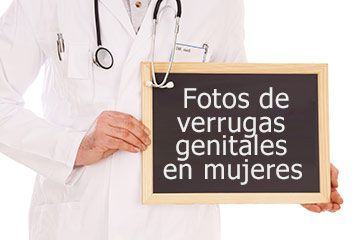Influenza Virus Guidelines for Congregate Facilities
April 27, 2009
These Guidelines will be continually updated as situation evolves.
Including
Nursing Homes, Assisted Living, State Schools and Hospitals, and Jail Facilities
*Guidelines include extracted information from: DADS State Schools, May, 2007, Pandemic Influenza Readiness Plan, A Guide for State Schools and Convalescent Facilities
Introduction
Texas Department of State Health Services (DSHS) is currently investigating suspect cases of human swine influenza caused by a novel Influenza A virus (H1N1) subtype. Evidence suggests that this virus involves a triple reassortment of human and avian influenza plus a fourth reassortment of Eurasian swine influenza genetic components.
These guidelines are provided for use in congregate facilities, such as nursing homes, assisted living facilities, state schools, state hospitals, and jail facilities. DSHS may modify these guidelines as more is learned about this novel influenza virus.
In order to decrease introduction and reduce the spread of illness in a congregate setting:
- Employees must stay home if ill
- Stringent hand washing is critical
- Routine flu shot is recommended
If you have an individual that develops influenza-like symptoms:
- Place individual in a separate room
- Contact your local public health agency or adhere to institutional protocols
- Refer to testing guidelines and clinical guidelines
Infection Control
The following are infection control recommendations for ill individuals in a congregate setting:
- Separate from others in single room if available until asymptomatic.
- If an ill person needs to move to another part of the facility, he/she should wear a mask during transition.
- Ill persons should wash hands frequently and follow respiratory hygiene practices (http://www.cdc.gov/flu/professionals/infectioncontrol/resphygiene.htm).
- Encourage ill persons and facility employees to use alcohol hand sanitizer frequently if hand washing amenities are not available.
- Cups, utensils and other items used by the ill person should be thoroughly washed with soap and water or by a dishwasher before use by other persons.
- Employees providing care to ill individuals should wear N95 respirators. Depending on symptoms and nature of procedures to be conducted, employees should consider using disposable gowns, gloves and goggles.
Employees and Other Residents with Close Contact Exposure to Ill Patients
- Employees with close contact to the ill person should voluntarily quarantine themselves at home for seven (7) days to avoid exposing non-infected employees and facility residents.
- Other residents with close contact to the ill person should be placed in quarantine for seven (7) days to avoid exposing non-infected employees and facility residents.
- Close contacts of infected persons should agree to take post-exposure prophylaxis with antiviral medications if there are no contraindications.
- Close contacts should be monitored daily for fever (temp ≥100 ºF) and/or any respiratory symptoms up to seven (7) days following the last known exposure.
Care of exposed employees if swine flu confirmed
- Close contacts should be monitored daily for fever (temp ≥100 º F) and/or any respiratory symptoms up to seven (7) days following the last known exposure. to an ill person who is a confirmed case of swine influenza virus infection.
- Close contacts of an ill person who is a confirmed case of swine influenza virus infection should be educated about the signs and symptoms of swine influenza virus infection and instructed to seek medical care if symptoms occur.
- Close contacts should be advised to contact public health staff if fever or feverishness or any respiratory tract symptoms occur up to seven (7) days following the last known exposure to the ill case.
Preventing Exposure of Congregate Living Residents
- Ill employees should remain home.
- Employees should wear surgical masks and maintain six-foot distances from residents infected with swine flu if possible. See Appendix 1.
- Screen all visitors for illness before allowing them contact with residents. See Appendix 2.
- Employees and visitors should wear surgical masks when in room with ill residents. See Appendix 1.
Respiratory Specimen Collection
Attending physicians for persons with respiratory illness ordering cultures should use the following collection procedures:
- Perform influenza testing on all patients with influenza-like illness (ILI: fever >100º F and cough and/or sore throat)
- Perform influenza testing on all patients with acute respiratory illness (ARI): recent onset of at least two of the following symptoms: rhinorrhea (runny nose) or nasal congestion, sore throat, cough (with or without fever or chills) and meet one of the following criterions:
- a history of recent travel to Mexico (within 7 days) or
- contact with a person who has been diagnosed with Influenza A.
Perform rapid flu testing, if available, for immediate decisions regarding communicability. However, rapid flu testing is not sufficiently sensitive to rule out influenza. Regardless of results of rapid flu testing, collect and submit specimen for viral culture.
Submit all specimens to the Texas Department of State Health Services or the appropriate public health department laboratory even if viral culture specimens are routinely submitted to another laboratory. Collection and submission instructions are listed below.
If rapid testing is not available, submit a culture specimen using the instructions below.
Droplet Precautions
Droplet precautions (see Appendix 3) are recommended while providing care to any individual with an influenza-like illness. An influenza-like illness is an illness characterized by fever >100º F and cough and/or sore throat.
Employees providing care for individuals with influenza-like illness should be wearing personal protective equipment (See Appendix 1):
- gloves
- surgical respirators, and,
- protective eye wear.
Employees providing care for individuals with influenza-like illness and performing respiratory care procedures, such as nebulizer treatments or suctioning for respiratory secretions (tracheal care) should be wearing personal protective equipment (See Appendix 1):
- gloves
- N95 respirators, and,
- protective eye wear.
Appendix 1 - Donning and Doffing PPE information sheet

Appendix 2 - Screening Questionnaire for Detection of Persons
Entering the Facility Who May Have Novel Influenza Virus
(This questionnaire is used to determine if employees/visitors should be allowed to enter the facility.)
Post Notice at the Facility and Building Entrances
Post visual alerts (in appropriate languages) at the entrance to the facility instructing persons with respiratory health concerns to:
- Inform reception and healthcare personnel of entry
- Practice respiratory hygiene/cough etiquette
- Reduce unnecessary visits to medical facilities
Question People Entering the Facility
Ask the employee/visitor if they can answer yes to any of the following questions:
- Do you have the flu?
- Do you have a temperature of at least 99.5?
- Have you been vomiting in the past 24 hours?
- Have you had diarrhea in the past 24 hours?
- If an employee can answer yes to any of the questions, document* the name and workstation, and then send them home.
- If a visitor can answer yes to any of the questions, ask them to return at a later time, when they are feeling better to avoid the possibility of spreading infection. Provide any influenza pamphlets available. Document* the name and person they were coming to visit, before sending them away.
Ask the employee/visitor if they have experienced any of the following symptoms in the past 24 hours:
- Feeling feverish but temp is unknown
- Coughing up phlegm/mucus
- Sneezing
- Body Aches
- Poor appetite
- Exposed to a person known to be infected
- If they can answer yes to any of the questions, route to triage clinic** for medical review before allowing entrance to facility.
*Forward all documentation to the person responsible for tracking symptomatic entrance to the facility per facility procedure.
* * Triage clinic = location set up for medical evaluation of those with questionable symptoms. This location should be where the employee/visitors would avoid contact with those who are non-symptomatic and as close to the facility entrance as possible.
Appendix 3 - Droplet Precautions
Background
Droplet Precautions are designed to reduce the risk of droplet transmission of influenza virus or other infectious agents. Droplet transmission involves contact of the conjunctivae or the mucous membranes of the nose or mouth of a susceptible person with large-particle droplets (larger than 5 µm in size) containing microorganisms generated from a person who has a clinical disease or who is a carrier of the microorganism. Droplets are generated from the source person primarily during coughing, sneezing, or talking and during the performance of certain procedures such as suctioning and bronchoscopy. Transmission via large-particle droplets requires close contact between source and recipient persons, because droplets do not remain suspended in the air and generally travel only short distances, usually 3 ft or less, through the air. Because droplets do not remain suspended in the air, special air handling and ventilation are not required to prevent droplet transmission. Droplet Precautions apply to any patient known or suspected to be infected with epidemiologically important pathogens that can be transmitted by infectious droplets.
In addition to Standard Precautions, use Droplet Precautions, or the equivalent, for a patient known or suspected to be infected with microorganisms transmitted by droplets (large-particle droplets [larger than 5 µm in size] that can be generated by the patient during coughing, sneezing, talking, or the performance of procedures).
- Patient Placement
Place the patient in a private room. When a private room is not available, place the patient in a room with a patient(s) who has active infection with the same microorganism but with no other infection (cohorting). When a private room is not available and cohorting is not achievable, maintain spatial separation of at least 3 ft between the infected patient and other patients and visitors. Special air handling and ventilation are not necessary, and the door may remain open. (ICP note: Cohort Influenza type A with A—type B with B etc. as long as possible) - Mask
In addition to wearing a mask as outlined under Standard Precautions, wear a mask when working within 3 ft of the patient. (Logistically, some schools may want to implement the wearing of a mask to enter the room.) - Patient Transport
Limit the movement and transport of the patient from the room to essential purposes only. If transport or movement is necessary, minimize patient dispersal of droplets by masking the patient, if possible.
Guideline for Isolation Precautions in Hospitals
Julia S. Garner, RN, MN, and the Hospital Infection Control Practices Advisory Committee
From the Public Health Service, US Department of Health and Human Services, centers for Disease Control and Prevention, Atlanta, Georgia. Garner JS, Hospital Infection Control Practices Advisory Committee. Guideline for isolation precautions in hospitals. Infect Control Hosp Epidemiol 1996; 17:53-80, and Am J Infect Control 1996; 24:24-52.
Fuente
Texas, Department of Health Services
http://www.dshs.state.tx.us






